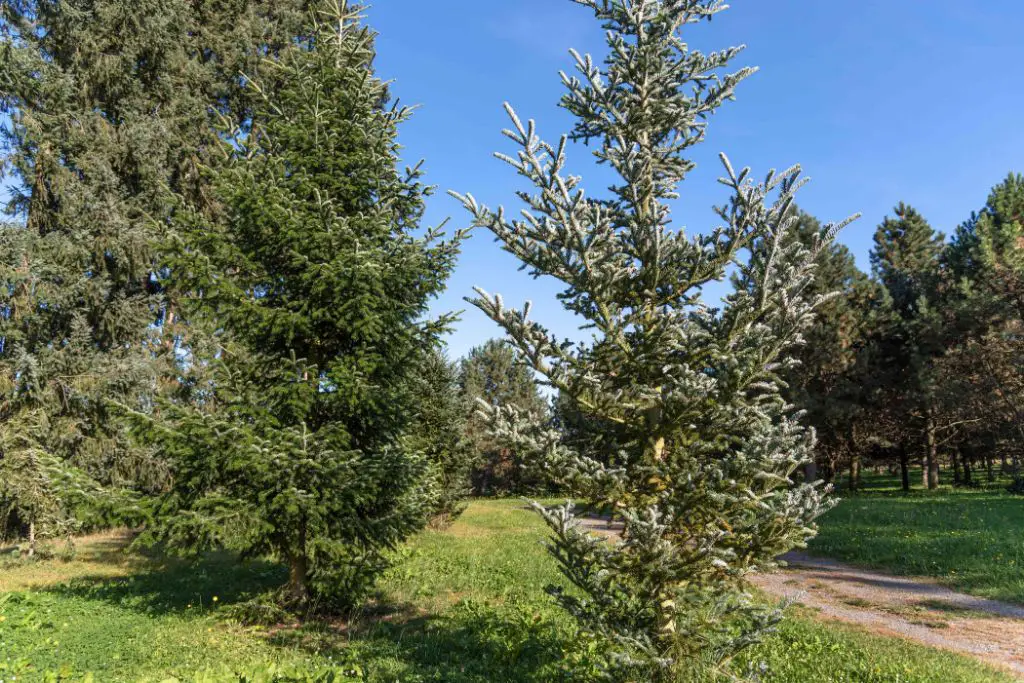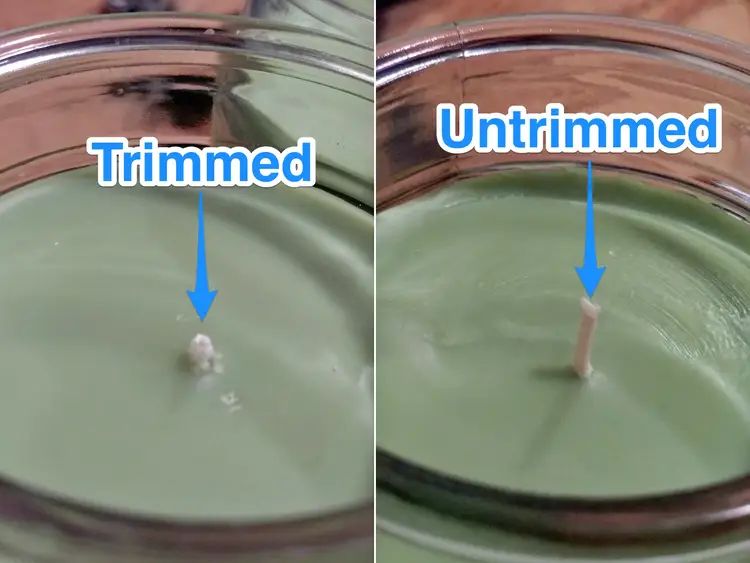Where Is The Best Place To Plant Balsam Fir?
Balsam fir (Abies balsamea) is an evergreen coniferous tree species native to northeastern North America. Also known as Canadian balsam, balsam, eastern fir, and Balm of Gilead fir, balsam fir features aromatic foliage and a narrow, pointed, spire-like crown.
The needles of balsam fir are flat, about 3⁄4 inch long, and dark green in color. The undersides have two white bands of stomata. The bark is smooth, gray, and often covered in resin blisters. Mature trees can reach 40-60 feet in height.
Native Range
The native range of balsam fir extends across much of Canada and the northeastern United States. According to the USDA Forest Service (Abies balsamea), balsam fir is most commonly found in Quebec, Ontario, New Brunswick, Nova Scotia, Newfoundland, Maine, New Hampshire, Vermont, New York, Michigan, Wisconsin, and Minnesota. It grows best in cool, moist climates, typically at elevations between sea level and 900 meters.
Balsam fir thrives in boreal forests, mixed wood forests, and coniferous swamps within its native range. It is well adapted to the cold winters, moderate summers, and high precipitation of the northeastern United States and southeastern Canada.
Climate Needs
Balsam fir trees thrive in cool climates and are native to the northern regions of North America. According to the US Forest Service, the optimal temperature range for balsam fir growth is between 27°F and 72°F (-3°C to 22°C) (US Forest Service). They prefer areas with cool summers and cold winters without extreme temperature fluctuations.
Balsam firs grow best with moderate rainfall between 30-80 inches (760-2030 mm) annually (National Park Service). The trees do not tolerate drought conditions well. Areas with frequent rainfall, high humidity, and abundant soil moisture suit the needs of balsam fir trees.
These trees prefer partial shade and filtered sunlight as opposed to direct, intense sunlight throughout the day. Their native boreal habitat provides conditions of moderate sunlight exposure that balsam firs are adapted to.
Soil Needs
Balsam fir trees thrive in acidic, sandy, loamy soil. The ideal pH range is between 5.5-6.5 (1). More acidic or alkaline soils will result in slower growth rates (2). The soil should also drain well – moist but not soggy conditions are ideal. Stagnant water can lead to root rot (3). Amending clay soils with organic matter like compost can help improve drainage. When planting, dig a hole as deep as the root ball and 2-3 times as wide. Backfill with native soil enriched with compost or peat moss to get the right pH and nutrient levels.
(1) https://www.thespruce.com/balsam-fir-care-guide-5199198
(2) https://pevachcorp.com/everything-you-need-to-know-about-growing-a-balsam-fir/
Sunlight Needs
Balsam fir trees prefer full sun but can tolerate partial shade, especially when young (Source). They grow best with at least 6 hours of direct sunlight per day. Providing ample sunlight helps the tree establish quickly and thrive. However, some shade, especially in the afternoon, can help protect against sunscald. When planting, choose a location that receives morning sun and afternoon shade. North-facing slopes and woodland edges often provide good sunlight conditions. Make sure not to plant balsam fir in an area that is too shaded, as insufficient light will lead to sparse growth (Source). With the right balance of sun and shade, balsam fir will grow vigorously.
Watering Needs
Balsam fir trees have moderate water requirements. They prefer consistent moisture, especially when young and becoming established. According to The Spruce, established balsam fir trees only require supplemental water during prolonged droughts. For young trees, watering them about 1-2 inches per week is recommended until they are established, which takes 2-3 years.
During the first year after planting, balsam firs need frequent watering. Water young trees every 7-10 days during the growing season if there is less than 1 inch of rainfall per week. Provide about 1-2 gallons of water per inch of trunk diameter. Reduce frequency after establishment.
According to PictureThis, watering a balsam fir once a week during spring and fall should be sufficient. However, pay attention to your climate and soil moisture levels. Cease watering during winter dormancy.
Balsam firs have shallow root systems and require proper moisture. Drought stress can cause needle browning and loss. Make sure to provide supplemental irrigation during dry periods.
Maintenance
Balsam firs require minimal maintenance once established. According to The Spruce, “They do not require much care other than the occasional watering. Pruning is not often needed except to remove damaged or dead branches.”
It’s recommended to prune any dead or damaged branches in late winter or early spring before new growth emerges (https://www.thespruce.com/balsam-fir-care-guide-5199198). This helps maintain the conical shape and appearance of the tree.
Fertilizing balsam firs is usually not necessary. However, if soil is poor, a light application of balanced fertilizer in early spring may help growth. Avoid over-fertilizing, as this can cause excessive foliage growth at the expense of bud development.
Balsam firs tend to be low-maintenance once established. Focus pruning efforts on removing dead or damaged branches to maintain the classic conical shape.
Pest and Disease Resistance
Balsam fir trees are susceptible to several pests and diseases. Some common issues include the balsam twig aphid, balsam fir needle cast, and armillaria root rot. The balsam twig aphid causes sticky, twisted shoots in the spring (Maine Department of Agriculture, Conservation and Forestry). Needle cast fungi can cause premature needle drop (Natural Resources Canada). Armillaria root rot infects roots and causes canopy thinning and mortality (Minnesota DNR).
To prevent issues, select disease-resistant stock, prune infected branches, rake up and dispose of fallen needles, and avoid wounding trees. Fungicides or insecticides may be required for serious infestations. Maintain tree health with proper planting, watering, fertilization, and mulching. Scout regularly for signs of stress, disease, or insect damage. Remove and destroy affected trees to prevent spread.
Finding the Right Location
When finding the ideal planting spot for your balsam fir, it’s important to take into account the specific climate, soil, sunlight, and watering requirements for this species of tree.

Balsam fir grows best in USDA planting zones 3 through 5, preferring cool northern climates with moderate humidity (The Spruce). Select a site with partial to full sun exposure (4-6 hours of sunlight daily). While balsam fir can tolerate some shade, too much shade may cause lower branches to die off and lead to sparse growth on the bottom part of the tree.
Well-drained, acidic soil with a pH of 4.5-5.5 is ideal (Pevach). Rich soil with lots of organic matter will provide essential nutrients for healthy growth. Avoid planting in soggy, poorly drained sites. Before planting, you may want to amend dense or alkaline soils with peat moss or compost to improve drainage and acidity.
Finally, select a spot with adequate moisture and rainfall to fulfill balsam fir’s high water needs. Water newly planted trees regularly the first few growing seasons until their root systems become established. Mature trees are somewhat drought resistant once established but prefer consistent moisture.
Conclusion
In summary, the ideal conditions and location to plant a balsam fir are:
- A location in its native range of cool, humid climates in northeastern North America.
- An area with cool summers and cold, snowy winters.
- Moist, acidic soil that is high in organic matter.
- Partial shade to full sun exposure.
- Consistent moisture, especially when young.
- Shelter from strong winds.
- Sufficient drainage to prevent soggy roots.
- Regular maintenance like pruning for shaping and density.
- Monitoring for pests and diseases common in fir trees.
By selecting an appropriate location that meets its preferred growing conditions, you can maximize growth, health, and longevity in your balsam fir trees.






